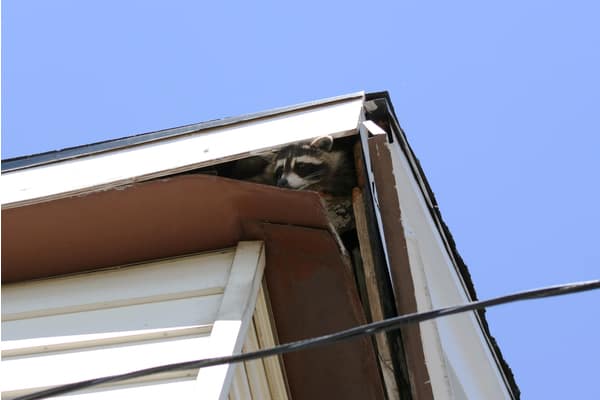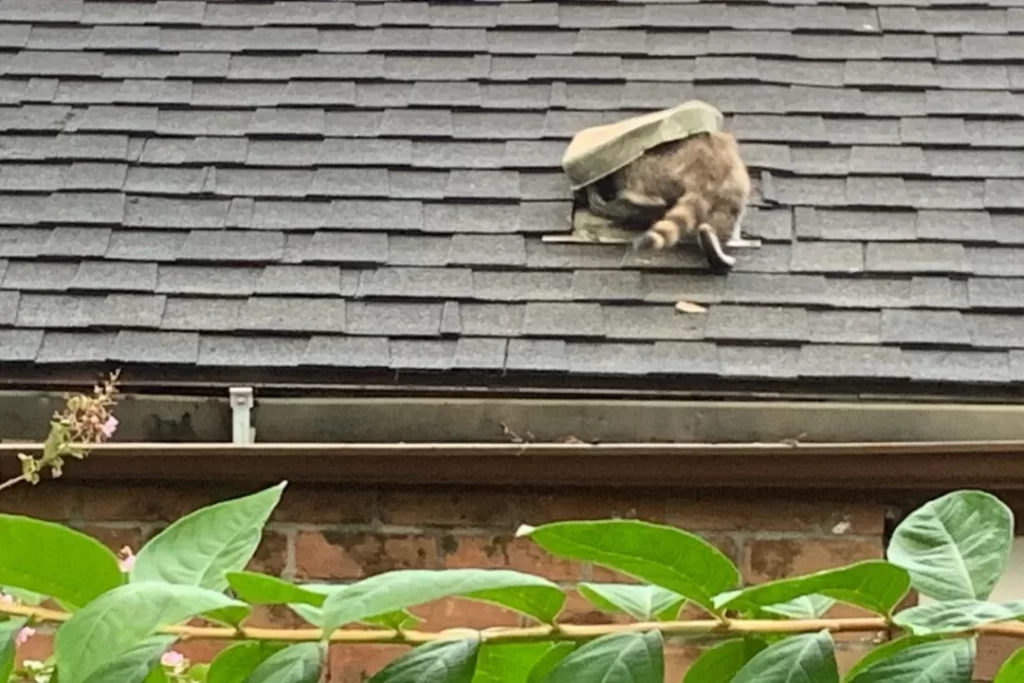In the winter, Denver can be a brusque, abrasive, and severely cold state. When the weather outside becomes terrible, nothing beats being tucked away within.
Animals, like humans, seek a safe refuge free from the weather. During severe weather, mating season, or when it’s time to give birth, they’re always on the lookout for a warm location to call home. In addition, unlike an ancient tree or a hole in the ground, the warmth of your attic can be far more appealing.
Attics are an obvious target if your roof vents are outdated or badly installed. If things aren’t in good shape, birds, bats, possums, raccoons, squirrels, mice, rats, bees, and wasps can all sneak inside.
Don’t underestimate the havoc that these hardy little critters can wreak! Even though their claws, beaks, and fangs are little, they have the ability to rip and tear even the strongest materials. Things start to become a little scary once they’re inside.

How to prevent animals from getting into your roof and attic
- Garbage and food waste attract a variety of pests, bugs, and wildlife, so keep it out of the yard.
- Overhanging trees, brush, climbing plants, and overgrown bushes should all be pruned: Brush, vegetation, and climbing plants should all be removed from the immediate vicinity of the home. Squirrels, rats, and raccoons commonly gain entry to a home by climbing up vines or leaping from nearby trees. Even if it looks nice, it’s best to keep vegetation cut back from your house.
- Install a drip-edge and a ridge-guard: Ridge-Guard is a ridge and ridge vent protection roofing product. Metal flashing installed on the roof’s edges is known as drip edge. It directs water away from the roof and effectively keeps animals out.
- Reseal shingles: Have your shingles resealed on a regular basis to maintain them tight. The seal can come loose due to bad weather, aging, strong winds, or storms. A frequent roof examination will disclose whether the shingles need to be resealed.
- Install vent covers and screens: Place physical barriers at the most likely animal entry places. Heavy-gauge metal wire is used to make these animal-resistant mesh screens.
- Clear the gutters and install Gutter Guard: Keeping gutters clear reduces bird attraction. To keep birds and vermin out, you can use guards, screens, and other barriers.
- Increase the thickness of your insulation: If animals do manage to sneak in, having an extra layer of insulation makes it more difficult for them to do so.
- Maintain and examine the roof: Regular inspections will catch any intrusions early on and avoid damage to the roof.
How animals can damage your roof and attic
Animals can damage roofing shingles, the underlying structure, and accessories. Wood, ventilation systems, insulation, wiring, plumbing, and pipes are all integrated in the interior design.
To make matters worse, they may bring fleas into your attic. They’ve created a biohazardous mess with their urine, droppings, and rubbish.
Every animal has its own special way of wreaking havoc. The following are some of the most prevalent intruders’ abilities.

Bats
Bats may fit through gaps in your roof as small as a quarter or a dime. Their feces or guano is the principal source of damage.
Bat guano is corrosive, acidic, and toxic. Guano may damage wood and insulation. It can also expel histoplasmosis spores, which might make you really ill.
Bats can also carry the rabies virus. Enlist the help of a professional to remove them and clean up the attic. Never try to solve this problem on your own.
Birds
Birds may seek refuge inside your roof or near your gutters. Their excrement is corrosive, causing shingles and internal structures to corrode.
Some birds, on the other hand, prefer to build their nests in pipes and vents. A respiratory crisis is just around the corner if you have bird nests in your ventilation system! Bird debris in your vents is hazardous to your health, damaging to your property, and attracting bugs.
Raccoons
These guys are known for their expertise and will pull your roof apart. It’s possible to yank off and pry off your shingles, overhanging soffit, and fascia boarding. Once inside, racoons shred insulation, pull piping, and nibble through wiring.





